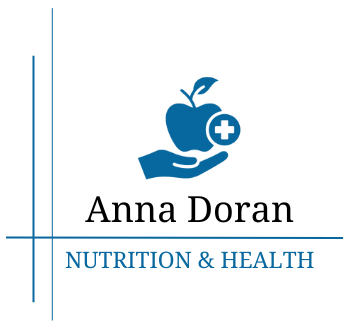Welcome to the course
All about Vitamin D Secrets
All about Vitamin D Secrets
Enhancing Absorption and Reducing
Side Effects
Side Effects
As the creator of this course, my hope is to empower you with a deeper understanding of vitamin D, unlocking its full potential for your health. Through these videos, I aim to improve your understanding around science of vitamin D, so that you can take charge of your well-being, making informed choices that lead to healthier life.
Welcome to the course
All about Vitamin D Secrets
All about Vitamin D Secrets
Enhancing Absorption and Reducing
Side Effects
Side Effects
As the creator of this course, my hope is to empower you with a deeper understanding of vitamin D, unlocking its full potential for your health. Through these videos, I aim to improve your understanding around science of vitamin D, so that you can take charge of your well-being, making informed choices that lead to healthier life.

Book free consultation
Just type your contacts
1 - Most likely you have a Vitamin D deficiency
In this video, you will learn:
📌 Statistics on vitamin D deficiency in the UK.
📌 What the optimal level of vitamin D in the blood should be for bone health and overall well-being.
📌 Where vitamin D comes from and why it’s nearly impossible to get enough from diet or outdoor exposure alone (+ the richest food sources of vitamin D).
Literature links:
https://www.gov.uk/government/
https://ods.od.nih.gov/factsheets/VitaminD
📌 Statistics on vitamin D deficiency in the UK.
📌 What the optimal level of vitamin D in the blood should be for bone health and overall well-being.
📌 Where vitamin D comes from and why it’s nearly impossible to get enough from diet or outdoor exposure alone (+ the richest food sources of vitamin D).
Literature links:
https://www.gov.uk/government/
https://ods.od.nih.gov/factsheets/VitaminD
Video 1
Notes
- Around 1 in 6 adults in the UK have low levels of vitamin D (lower than government recommendations), while, according to the National Institutes of Health, they should be above 30 nmol/L, with the maximum level being 125 nmol/L.
- Common symptoms of vitamin D deficiency: fatigue, frequent illnesses, muscle and back pain, osteoporosis, hair loss, depression, weight gain, and tooth decay.
- Only 10% of vitamin D comes from food, as the primary source is sunlight. This makes it difficult for many people to get the necessary amount of the "sunshine vitamin" through diet alone.
- Main dietary sources of vitamin D: fatty fish (tuna, mackerel, salmon), eggs, dairy products (milk, cheese), beef liver, and fortified foods (cereals, bread, juices).
2 - How to easily find out if you have a Vitamin D deficiency
In this video, you will learn:
📌 Should you raise your vitamin D levels above the optimal range?
📌 How much vitamin D should be taken in supplements according to the UK health guidelines.
📌 What is a safe, effective, and practical daily dose of vitamin D based on research and my personal experience.
📌 How to raise your vitamin D levels on your own ensuring no side effects.
Links to test vitamin D
monitormyhealth.org.uk - £38
betteryou.com - £34.95
📌 Should you raise your vitamin D levels above the optimal range?
📌 How much vitamin D should be taken in supplements according to the UK health guidelines.
📌 What is a safe, effective, and practical daily dose of vitamin D based on research and my personal experience.
📌 How to raise your vitamin D levels on your own ensuring no side effects.
Links to test vitamin D
monitormyhealth.org.uk - £38
betteryou.com - £34.95
Video 2
Notes
- According to the NHS, the recommended daily dose of vitamin D for adults is 10 mcg or 400 IU. The safe upper limit is 100 mcg (4,000 IU) per day.
- According to the Birmingham NHS Trust data most adults need 2,000–3,000 IU per day (50–75 mcg) to maintain healthy blood levels of vitamin D.
- If your vitamin D levels rise to 5,000–10,000 nmol/L in 2-3 months, you should check for issues with fat absorption, adjust the dosage, or change the supplement formula.
- If your vitamin D levels reach 15,000–20,000 nmol/L in 2-3 months, absorption is good, and you can balance the dosage according to your goals for vitamin D levels in your blood.
- Vitamin D is recommended during the winter and autumn months, but year-round supplementation is also beneficial. The key is to personalize the dosage for your body's needs.
- If you need help determining the right dosage or are unsure about anything, feel free to contact me for a 30-minute consultation.
3 - Which Vitamin D formula to choose?
In this video, you will learn:
📌 Different vitamin D formulas available.
📌 The differences between various forms of vitamin D and which one is suitable for specific situations.
📌 The reasons why vitamin D may not be absorbed properly.
📌 The best vitamin D formula based on my experience.
Links to vitamin D supplements
Capsules 5000 units on iHerb
Vitamin D/K2 Liquid on iHerb
Vitamin D/K2 liquid on iHerb (same as on the video)
Vitamin D+K2 Spray in Holland&Barrett
Vitamin D3 4000iu + K2 NutritionGeeks
📌 Different vitamin D formulas available.
📌 The differences between various forms of vitamin D and which one is suitable for specific situations.
📌 The reasons why vitamin D may not be absorbed properly.
📌 The best vitamin D formula based on my experience.
Links to vitamin D supplements
Capsules 5000 units on iHerb
Vitamin D/K2 Liquid on iHerb
Vitamin D/K2 liquid on iHerb (same as on the video)
Vitamin D+K2 Spray in Holland&Barrett
Vitamin D3 4000iu + K2 NutritionGeeks
Video 3
Notes
- Capsules are the most popular and cost-effective form of supplement.
- Spray - an optimal form that is absorbed by most people since absorption starts in the mouth, bypassing the digestive tract. Betteryou research link
- Liquid - better absorption compared to capsules, but it still passes through the digestive tract.
4 - How to take Vitamin D for optimal absorption and reduced side effects
In this video, you will learn:
📌The best time to take vitamin D.
📌 Which foods to take with vitamin D for optimal absorption.
📌 Potential side effects of high vitamin D dosages and how to avoid them. The science of vitamin D absorption.
Literature links:
betteryou.com/pages/vitamin-d-and-vitamin-k
📌The best time to take vitamin D.
📌 Which foods to take with vitamin D for optimal absorption.
📌 Potential side effects of high vitamin D dosages and how to avoid them. The science of vitamin D absorption.
Literature links:
betteryou.com/pages/vitamin-d-and-vitamin-k
Video 4
Notes
- Vitamin D is best taken in the first half of the day with foods containing fats (such as nuts, fish, eggs, and oils).
- To avoid calcium buildup in blood vessels and to ensure calcium is not drawn from bones, it’s important to take vitamin D with vitamin K2 and magnesium, especially if you are taking more than 4,000 IU of vitamin D per day.
- The daily dose of vitamin K2 is 1 mcg per kg of body weight. The maximum safe dose is 1 mg per day.
- The average daily dose of magnesium is 400 mg, but you may need more or less depending on your diet and daily magnesium usage.
want to learn more about my services?
click below to view how I can help you to improve health through nutrition
ЛОЖЬ
ЛОЖЬ




